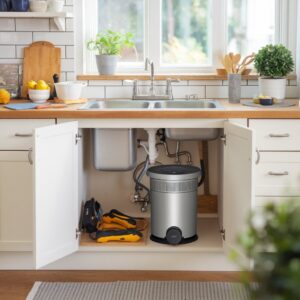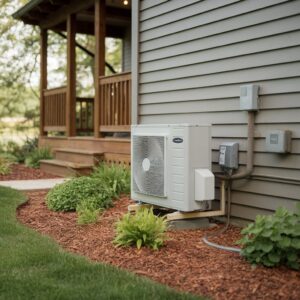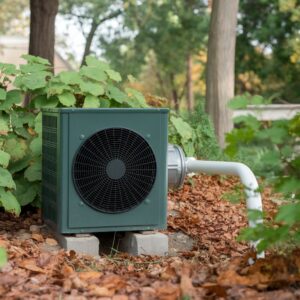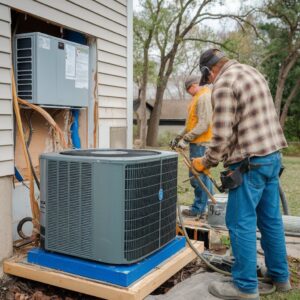A kitchen garbage disposal is a convenient appliance that helps US homeowners manage food scraps, reduce odors, and keep kitchens cleaner. With so many disposal types and features available can make it hard to decide on the right unit. But selecting a disposal that aligns with your cooking habits, household size, and plumbing setup can make everyday chores simpler while preventing unnecessary clogs or repairs.
For anyone wondering how to choose a garbage disposal, focusing on motor power, size, and feed type is key. A well-matched disposal streamlines kitchen tasks and helps protect your plumbing. Because each home has different demands—especially when you factor in a busy household or frequent dinner parties—it’s crucial to consider capacity, safety features, and maintenance routines when evaluating the best option.
Understanding the Basics of Kitchen Garbage Disposals
Many homeowners first ask, “What is a garbage disposal in kitchen usage?” Put simply, the disposal sits under the sink, breaking food scraps into tiny particles that can be rinsed down the drain. It helps mitigate odors, cuts down on trips to the outside trash bin, and lessens the risk of pests. By stopping large scraps from entering the drain line, you reduce the likelihood of clogs, backups, or unpleasant smells.
Modern kitchen plumbing upgrades commonly include a garbage disposal for convenience and efficiency. It is important to select a disposal that meets or exceeds local plumbing codes in the US. If you have a septic system, you’ll want a septic-safe garbage disposal to avoid overwhelming the tank and ensure safe wastewater treatment.
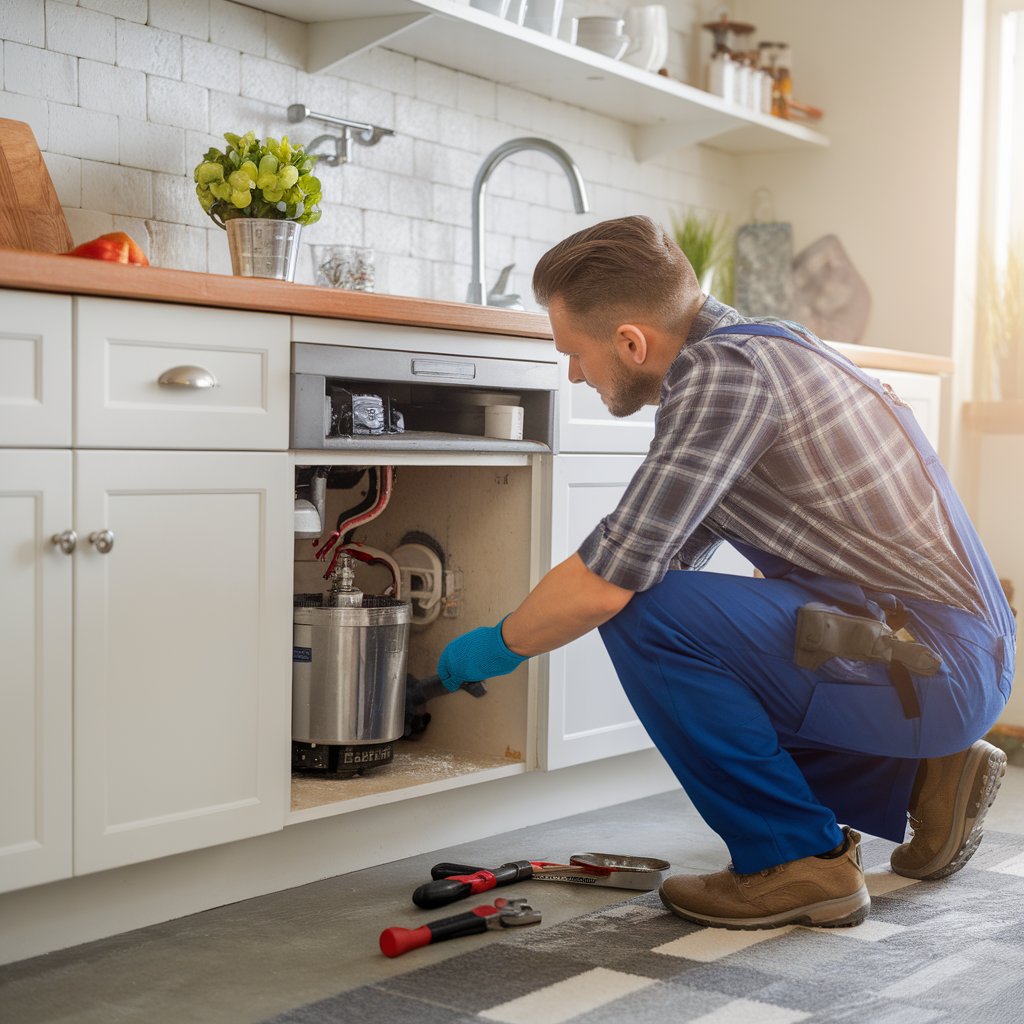
Continuous Feed vs. Batch Feed: Finding Your Perfect Fit
Garbage disposal types often come in two main styles: continuous feed and batch feed. Constant feed disposals let you add scraps while the machine runs, making them popular in kitchens that generate a steady flow of waste. This design is typically more straightforward for everyday use.
Batch feed disposals only operate when a specific cover is in place, reducing the chance of accidental items slipping down. For households that value safety, especially with children, a batch feed model can be reassuring. Yet it may process waste more slowly than its continuous counterpart.
Motor Power and Size Considerations
A crucial part of how to choose a garbage disposal size is balancing horsepower, capacity, and household demands. Disposals range in motor strength from around 1/3 horsepower to 1 horsepower or more. A smaller motor may be enough for a single occupant who prepares minimal meals. However, for larger families or frequent gatherings, a more powerful motor ensures smoother grinding, reduced jams, and fewer blockages in the drain line.
Along with motor power, physical dimensions matter. If you have limited under-sink space, measure carefully so the unit fits without interfering with existing plumbing or storage. Garbage disposal compatibility involves checking the electrical load requirements and making sure the mounting system is compatible with your sink. This prevents headaches during installation and keeps your kitchen organized.
Must-Have Features and Upgrades
For quieter performance, look for garbage disposal noise insulation, such as advanced sound baffles or anti-vibration technology. Many homeowners appreciate how a calm garbage disposal makes mealtime cleanup more pleasant. Stainless steel grinding components can boost durability and help resist corrosion. Some disposals feature a multi-stage grinding system to break down scraps further, reducing clogs. A removable splash guard can also simplify cleaning and maintain a more hygienic sink area.
Safety is another aspect to consider. Built-in features like an auto-reverse mechanism help prevent or clear jams, while overload protection automatically shuts the unit off if it overheats. If you need a septic-safe option, certain disposals come equipped with microorganisms that help break down waste in septic systems. Additional details, such as an easy-to-operate mounting system and instructions for safe garbage disposal operation, also help both new and experienced users.

Installation and Maintenance Essentials
Many homeowners try to do-it-themselves under-sink disposal installation, but hiring a professional ensures correct mounting and avoids leaks or electrical hazards. The disposal must be properly tied into your plumbing, and if you have a dishwasher, it typically connects to the same drain system. DNA Plumbing and Heating’s skilled technicians provide code-compliant installations and can advise if your drain lines need an upgrade before adding the disposal.
Regular maintenance helps your garbage disposal last a lot longer. Run cold water while grinding, and let the water flow briefly after shutting it off to clear remaining particles. Occasionally, grinding small ice cubes or citrus peels can freshen the grinding chamber. If you notice unusual noises, odors, or repeated jams, a checkup from DNA Plumbing and Heating can pinpoint the issue. Preventive care helps you avoid major repairs and ensures consistent disposal performance.
Conclusion
Choosing the right disposal means balancing kitchen usage, motor power, available space, and safety. DNA Plumbing and Heating’s professional installations meet US plumbing standards while prolonging your disposal’s lifespan. From horsepower selection to septic-safe solutions to garbage disposal replacement, our knowledgeable team has you covered. Reach out today to schedule a consultation or service appointment and experience the peace of mind that comes with expert care for your home’s garbage disposal.



